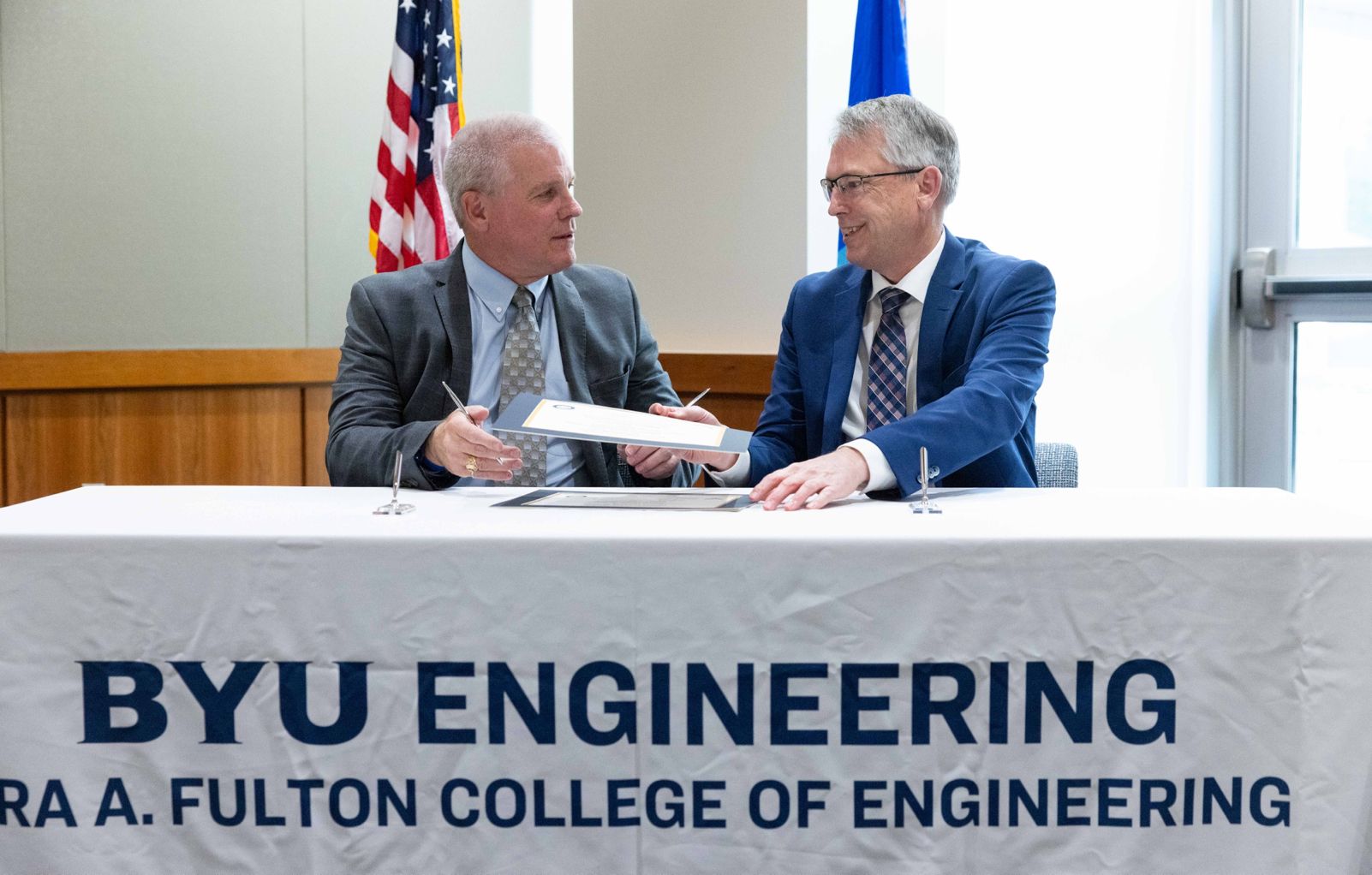
The U.S. Air Force signed an Educational Partnership Agreement with BYU on Sept. 20, allowing students and faculty to collaborate on mutually beneficial research projects. The EPA will allow BYU students to help the Air Force strengthen national security through original ideas.
Thomas Lockhart, director of engineering for the Air Force Nuclear Weapons Center at Hill Air Force Base in Utah, has been trying to get BYU an EPA since 1987. 35 years later, the partnership is official.
The EPA, a five-year collaboration that formalizes ongoing and future research efforts, allows the Air Force to fund approved projects much faster than former arrangements. Though the arrangement is defense-affiliated, resources are open to military and non-military-affiliated students.
Lockhart explained how the EPA overcomes barriers that used to exist due to lengthy approval processes requiring months of paperwork.
“Today the academic engagement process is too slow and very methodical,” Lockhart said, stating that the approval process used to take six months or more. “Now with the EPA we can almost instantaneously start working together.”
The EPA overcomes an issue that saw senior students interested in military-related capstone projects graduating before projects received approval or funding.
Lockhart acknowledged this problem, and said that the EPA will allow for relationships to be established early so that projects can be completed within necessary time frames.

“We’ll simultaneously help out creating and evaluating the senior project,” Lockhart said. “Maybe they need equipment in the lab or something different for the military, and we can help get access to that facility, laboratory or piece of equipment.”
BYU mechanical engineering professor Nathan Crane is currently investigating 3D printing materials for space and the reliability of such materials, as part of a partnered project. He spoke of pre-EPA approval timelines.
“It was months, probably six months total,” Crane said. “The company and the Air Force negotiated the contracts. Kind of slow.”
The projects, contracted by the Space Force, will focus on overcoming harsh space environments.
“It’s a nasty environment that degrades a lot of the plastic, so we’re trying to develop a process and material that will be compatible for being in space for decades,” Crane said.
In addition to cutting approval wait times, Lockhart shared how the EPA benefits national security, as the Department of Defense brings on student projects and perspectives.
“National security is really tough, so education at all levels within our country is important,” he said. “What’s exciting to me is allowing people to see what the Department of Defense challenges are in the national security arena.”
Lockhart said that the incorporation of academic perspective into the national defense arena plays an important role in challenging biases.
“Everyone has an unconscious bias in one direction or another,” he said. “Collaboration with universities, such as BYU, is exciting to me because I get to hear different perspectives than what I hear within the military.”
Associate Academic Advisor Larry Howell of the mechanical engineering department was involved in the EPA signing and has done millions of dollars in research contracts with the Air Force. He shared how BYU students can benefit from the partnership.

“If a student’s interested, whether it’s national defense or the aerospace industry, or any of those things, and don’t see themselves as a uniformed officer in the Air Force, but would still like to contribute and be involved, this offers them opportunities to do that,” Howell said.
Howell said that although there are things that can be learned in the classroom, there are other things that are “best learned hands on and working with people” like EPA opportunities will provide.
Lockhart spoke of these opportunities and the demand for civilian workers at Hill Air Force base, stating that most people on base are not military members.
“Almost 100,000 people are needed to support the aerospace and defense work we perform in northern Utah,” he said. “Every engineering and technical graduate from BYU, we could hire for aerospace and defense in northern Utah.”
Though the EPA focuses on engineering projects, Lockhart said there is high demand at Hill AFB for project, program and contract managers, and graduates in logistics, finance, and maintenance.
“I know BYU has really excellent schools in these areas, from program management to logistics,” he said. “We have positions currently in civil service for these areas too.”
For students wishing to benefit from EPA projects or defense careers after graduation, Lockhart shared some advice.
“I’m encouraging BYU to think beyond engineering. With aerospace and defense and how big the personnel demand is up here in northern Utah, pretty much any skillset can be applied,” he said. “The EPA will allow us to do that — bring a student in, get them comfortable with the basics and applied education and then eventually come to work for the Department of Defense.”




